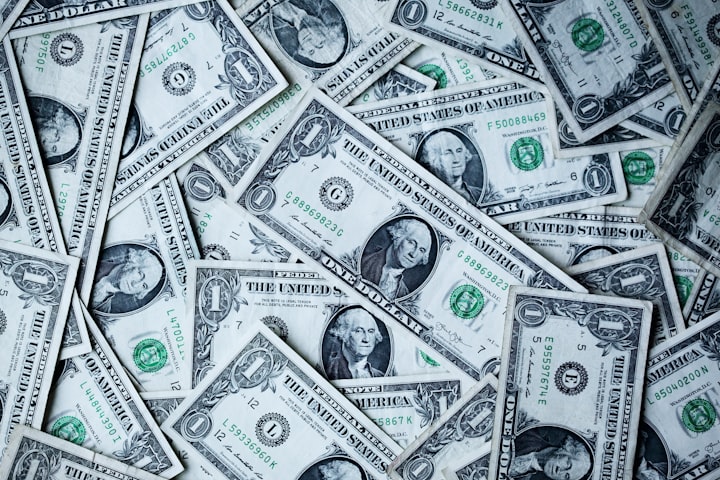
King Tutankhamun, also known as the "boy king," was an Egyptian pharaoh who ruled during the 18th dynasty of ancient Egypt, from 1332 BC to 1323 BC. He ascended to the throne at the young age of nine and died when he was only 18 years old. Despite his short reign, King Tutankhamun is one of the most famous pharaohs of ancient Egypt, largely due to the discovery of his tomb in 1922 by British archaeologist Howard Carter. Inside the tomb, Carter and his team discovered a treasure trove of priceless artifacts that have fascinated and captivated the world for nearly a century. In this article, we will explore 17 of the most priceless treasures of King Tutankhamun.
Gold Mask:
The gold mask of King Tutankhamun is perhaps the most famous and iconic artifact from his tomb. It is a life-sized mask made of solid gold and weighs over 24 pounds. The mask is adorned with intricate details and features the face of the young pharaoh, with inlaid eyes of obsidian and quartz.
Coffin:
King Tutankhamun was buried in three nested coffins, each made of solid gold. The innermost coffin is the most ornate, featuring detailed engravings and a likeness of the pharaoh's face.
Throne:
The pharaoh's throne is made of wood covered in gold leaf and is decorated with scenes from his life and reign, including his coronation and military victories.
Canopic Shrine:
The canopic shrine is a wooden box with four compartments, each containing a jar that held the pharaoh's organs. The box is covered in gold leaf and decorated with images of the four protective goddesses.
Sarcophagus:
The pharaoh's sarcophagus is made of solid gold and weighs over 1.5 tons. It is adorned with intricate engravings and scenes from the pharaoh's life.
Anubis Shrine:
The Anubis shrine is a wooden box covered in gold leaf and decorated with images of the jackal-headed god Anubis. It held the pharaoh's mummified heart.
Gilded Chariot:
The pharaoh's gilded chariot is decorated with scenes from his life and reign, including his hunting expeditions and military campaigns.
Fan:
The pharaoh's fan is made of ostrich feathers and is adorned with gold and semi-precious stones. It is believed to have been used during ceremonial processions.
Alabaster Vase:
The alabaster vase is a beautifully carved vessel that held the pharaoh's organs. It is decorated with images of the pharaoh and the gods.
Jewelry:
King Tutankhamun's tomb contained a vast amount of jewelry, including necklaces, bracelets, and pendants made of gold and precious stones. One of the most notable pieces is a necklace with a pendant that features the god Amun.
Bowls and Cups:
The pharaoh's tomb contained a collection of bowls and cups made of gold and precious stones. One of the most impressive pieces is a solid gold cup with a delicate lotus flower design.
Scarab Beetles:
The pharaoh's tomb contained over 140 scarab beetles made of various materials, including gold and lapis lazuli. These beetles were considered symbols of rebirth and were often used in funerary rituals.
Game Board:
King Tutankhamun's tomb contained a game board made of ebony and ivory, with gold leaf accents. The board is decorated with scenes from Egyptian mythology and was likely used for playing the game of senet, a popular board game in ancient Egypt.
Staffs:
The pharaoh's tomb contained a collection of staffs, including one made of ebony and gold that features an image of the pharaoh and the god Horus.
Shabtis:
Shabtis were small figurines that were placed in tombs to serve as workers for the deceased in the afterlife. King Tutankhamun's tomb contained over 400 shabtis, including a larger one made of wood and covered in gold leaf.
Gilded Bed:
The pharaoh's gilded bed is adorned with intricate details and was likely used for ceremonial purposes. It is covered in gold leaf and features images of the pharaoh's life and reign.
Trumpets:
The pharaoh's tomb contained two trumpets made of silver, each adorned with intricate engravings and featuring images of the pharaoh and various gods.
Conclusion:
King Tutankhamun's tomb is a testament to the wealth, power, and cultural achievements of ancient Egypt. The artifacts discovered inside his tomb have captivated the world for nearly a century, and continue to provide insight into the daily life, beliefs, and traditions of ancient Egyptians. Each of the 17 priceless treasures listed in this article is a testament to the incredible craftsmanship and artistic skill of ancient Egyptian artisans, and serves as a reminder of the legacy of one of the most famous pharaohs in history.
About the Creator
Arish Ali
The world is yours!





Comments
There are no comments for this story
Be the first to respond and start the conversation.